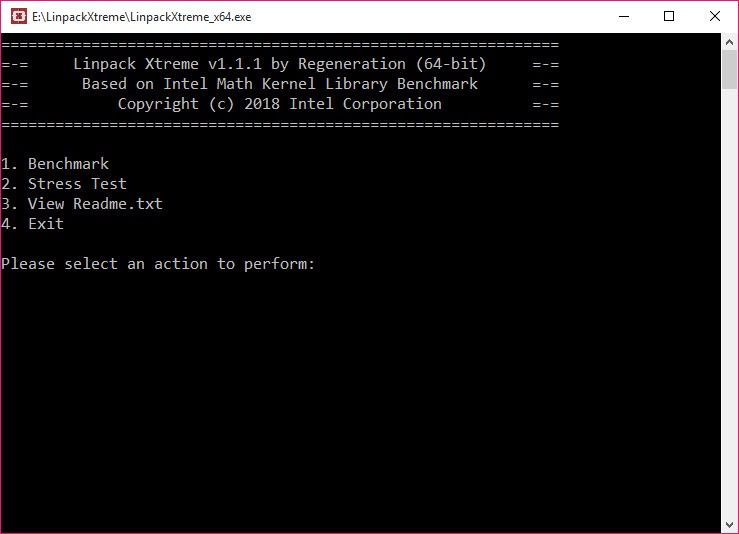

Clint Whaley, Innovative Computing Laboratory, UTK Modified by Piotr Luszczek, Innovative Computing Laboratory, UTK Modified by Julien Langou, University of Colorado Denver =. = HPLinpack 2.1 - High-Performance Linpack benchmark - OctoWritten by A. Customization of parameter should be adjustable to improve benchmarking. This benchmark was performed with size of problem = 45000, which is default setting. Intel Optimized LINPACK for shared-memory version declares Rmax of my Xeon node is 283.945 GFlop/s Maximum memory requested that can be used=16200901024, at the size=45000 For theoretical peak of performance, the formula to calculate GFlop/s is followingĬPU frequency: 3.199 GHz Number of CPUs: 2 Number of cores: 12 Number of threads: 12 The goal of this benchmark is to measure the performance of Intel CPU, by solving dozens of mathematical equation - Linear equation - measured in FLOPS unit, such as GFlop/s or TFlops. The MKL benchmark and developer guide can be found here. Both Window and Linux users can download the Intel's High Performance LINPACK (HPL), called Intel Optimize LINPACK Benchmark and Intel Distribution for LINPACK Benchmark from the Intel Math Kernel Library (MKL). LINPACK has been mostly used to test the supercomputer, whose best performance was compared and ranked by TOP500, the most famous HPC benchmark ranking website. It was written in Fortran by Jack Dongarra. LINPACK is a software library for performing numerical linear algebra on digital computers. To do so, one can use this LINPACK for benchmarking your own PC/Cluster/Supercomputer or whatever that made of CPUs as processor. Do you know how to know the best performance of computer? Have you ever wanted to evaluate the speed/performance of your CPU and compared its power to others? This post will explain you step-by-step how to benchmark or test the performance of your machine!. TOP500 project ranks and details the 500 most powerful non-distributed computer systems in the world.


 0 kommentar(er)
0 kommentar(er)
